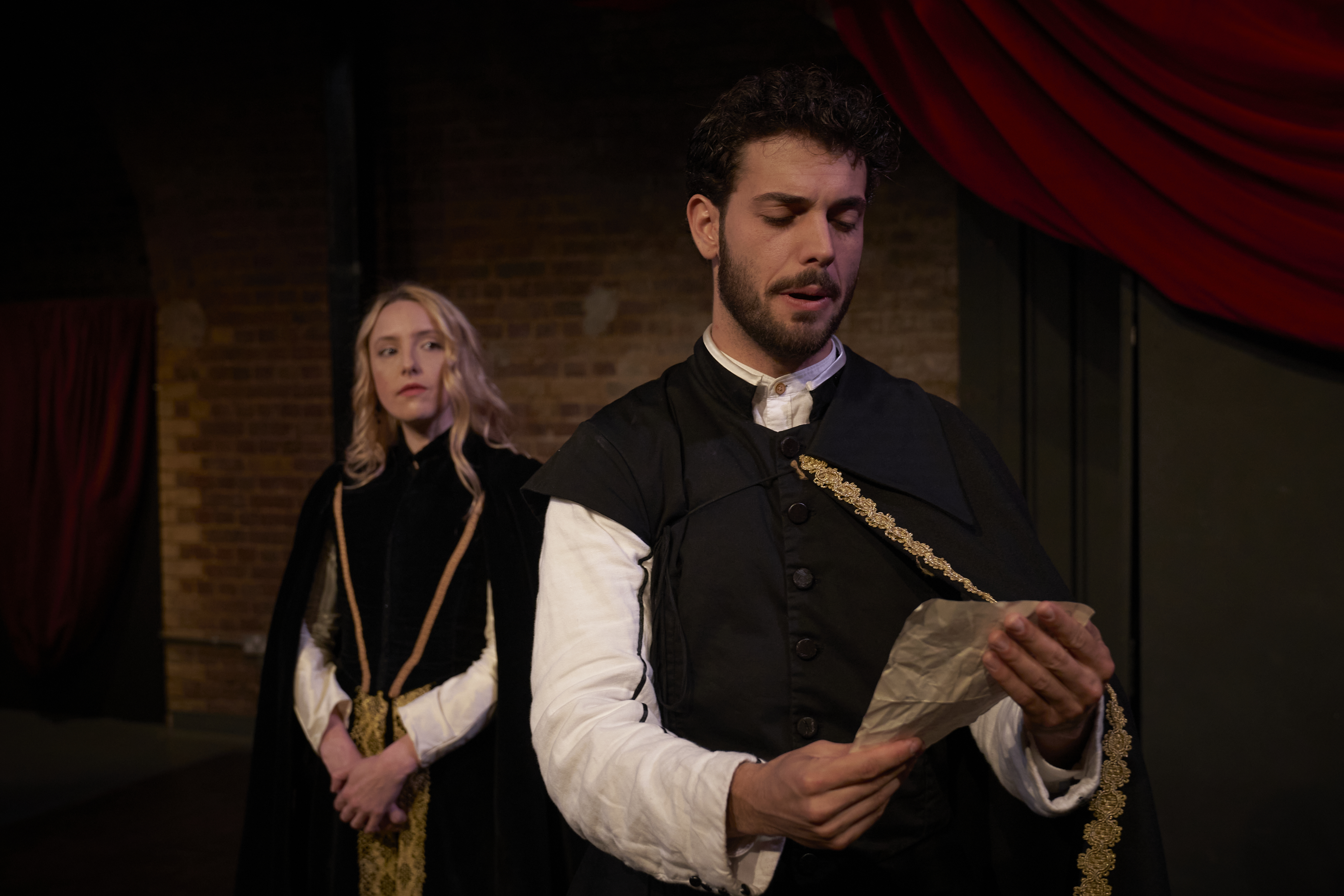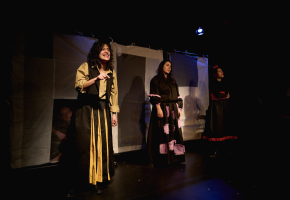Set in the city of Naples El Perro del Hortelano is one of the 1800 plays that Lope de Vega wrote. First presented in 1613, (three years before Shakespeare’s death), when dramas were written in verse, Lope de Vega, like some of his peers, had such a superb ability with language that it is a pleasure to hear, even today.
There is a beat and a rhythm to the stanzas, that flow effortlessly. The Spanish Golden Age was also a period when there was a great deal of physical action on stage, with much cheeky clowning and bawdy, often tasteless, visual jokes and coarse body language. These were plays intended to entertain while expressing deeper philosophical concepts.
Today much of this has been toned down, sadly, for it added a fascinating dimension and contrast to the more philosophical and literary aspects of the drama. Fortunately, this exciting version, directed by Dominic Dromgoole has kept much of its risqué, absurdist humour which made it a delightful experience all round.
Much of this thanks to the imaginative antics of Tristán (Teodoro’s servant), played by the superb Rodrigo Arribas. Arribas runs the Fundación Siglo de Oro company and worked closely with Dominic to maintain this lively aspect of the period, with beautifully timed musical interludes and hilarious visual jokes.
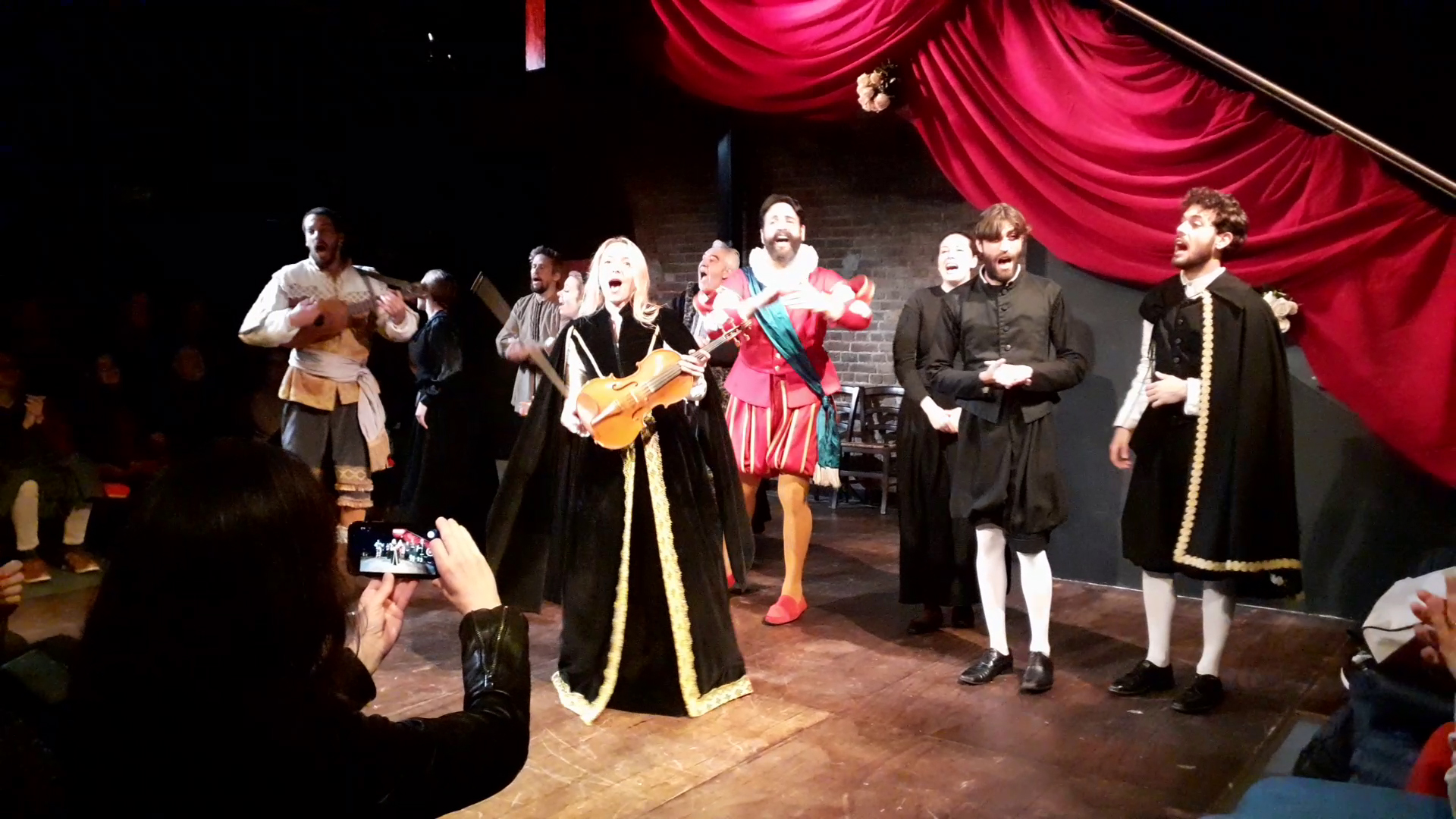
Fundación Siglo de Oro Theatre Company
Dominic Dromgoole was artistic director at the Globe Theatre for ten years. He has worked with a number of theatrical companies in many different countries, like China and Russia, where his lack of language skills vanished once he had thoroughly familiarized himself with the text and the actors. With his background, he was able to bring a wealth of knowledge and experience, in particular of the Elizabethan period to all the various productions.
It is no coincidence that the verse used by playwrights during the Spanish Golden Age is known as ‘verso Isabelino’ (Elizabethan verse). According to Dominic, this proves that despite people thinking that Britain, at the time, was restricted to only communicating with the European northern countries, like Germany and the lowlands, time has proved that the interconnections between London, Madrid, and even with Paris, were a lot closer and more extensive than had previously been believed.
Another effective element of this production of El Perro del Hortelano is the way the actors interact with the audience, directly talking to them, not merely as an aside. This Spanish company led by Rodrigo Arribas, made full use of the intimacy of the Cervantes Theatre to make everyone feel a part of the action.
El Perro del Hortelano is a tale of class divisions, privileges and eroticism, imbued with love, envy, jealousies and the agonizing need for honour to be maintained at all costs. Diana, the Countess of Belflor is capricious and selfish. She falls in love with her secretary Teodoro (Gabriel de Mulder) but as he is her servant, he refuses to marry her as he lacks blue blood, insisting he belongs to a different social class. Initially, he had fallen for Marcela, Diana’s favourite lady-in-waiting, whom he has promised to marry.
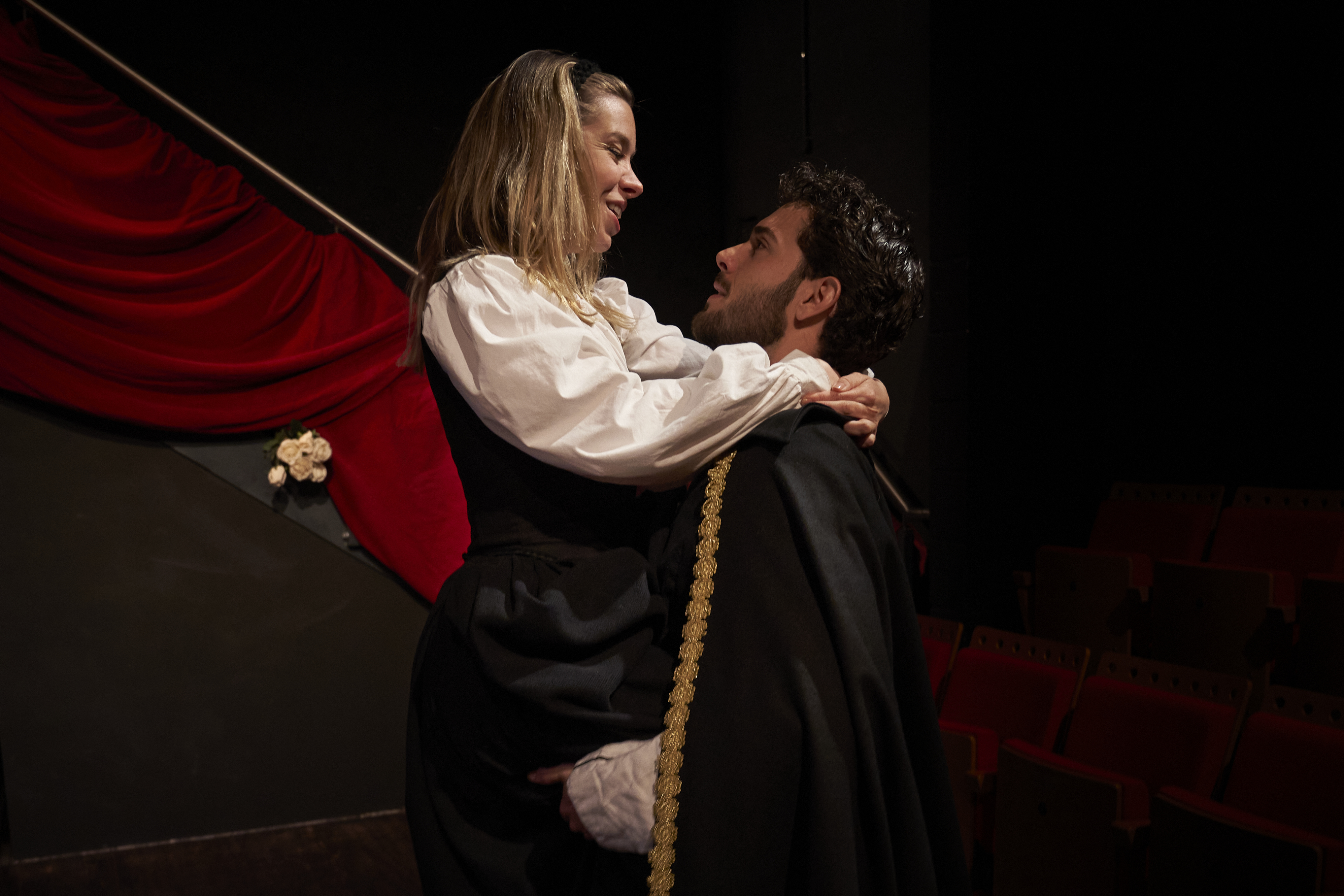
Macarena Molina (Marcela) and Gabriel de Mulder (Teodoro)
Despite having consented to their matrimony, Diana finds she cannot bear to see them together and realizes she has fallen madly in love. Nevertheless, she continues to blow hot and cold with him in a capricious and cruel manner, tantalizingly taunting him and seducing him at the same time, living up to the motto: -
“… como el perro del hortlano, que ni come ni deja comer”
(The dog in the manger will not eat the oats but will not allow anyone else to have them either).
Meanwhile, Diana is courted by two extremely funny upper-class twits, Conde Federico (Ángel Ramón Jiménez) and Marqués Ricardo (José Juan Sevilla), both worthy of a P. G. Wodehouse tale, who prostrate themselves before her at every turn. One particularly clever idea of Dominic Dromgoole was to give the Marques Ricardo a marked shoe fetish. This leads to an hilarious moment when he almost devours one of the Contessa’s feet in excitement, when he mistakenly thinks she will marry him after all.
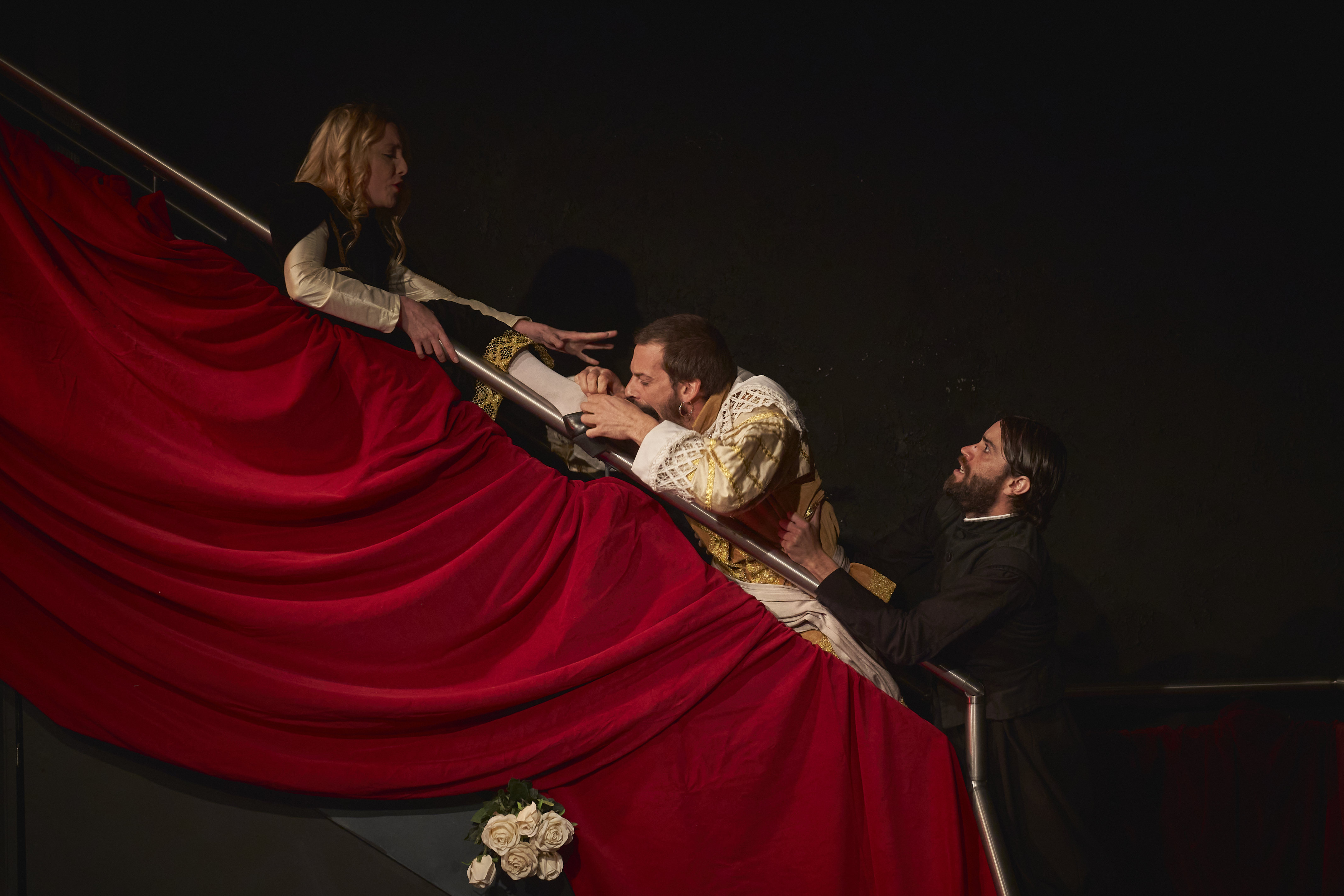
José Juan Sevilla (Marqués Ricardo) and Manuela Morales (Countess Diana)
Meanwhile, the Contessa Diana’s self-destructive actions are so motivated by jealousy and rage, that she’s even prepared to hurt herself in the process. These dangerous liaisons are leading to a lose / lose situation for all, until Teodoro’s faithful servant and friend, Tristán. comes to the rescue with a secret plan to imbue Teodoro with the blue blood that he is missing.
Artfully, he convinces old Count Ludovico (Mario Vedova) that Teodoro is none other than his long-lost son of the same name, thus enabling the marriage to Diana, the countess to take place. As Shakespeare would say: All’s well that ends well.
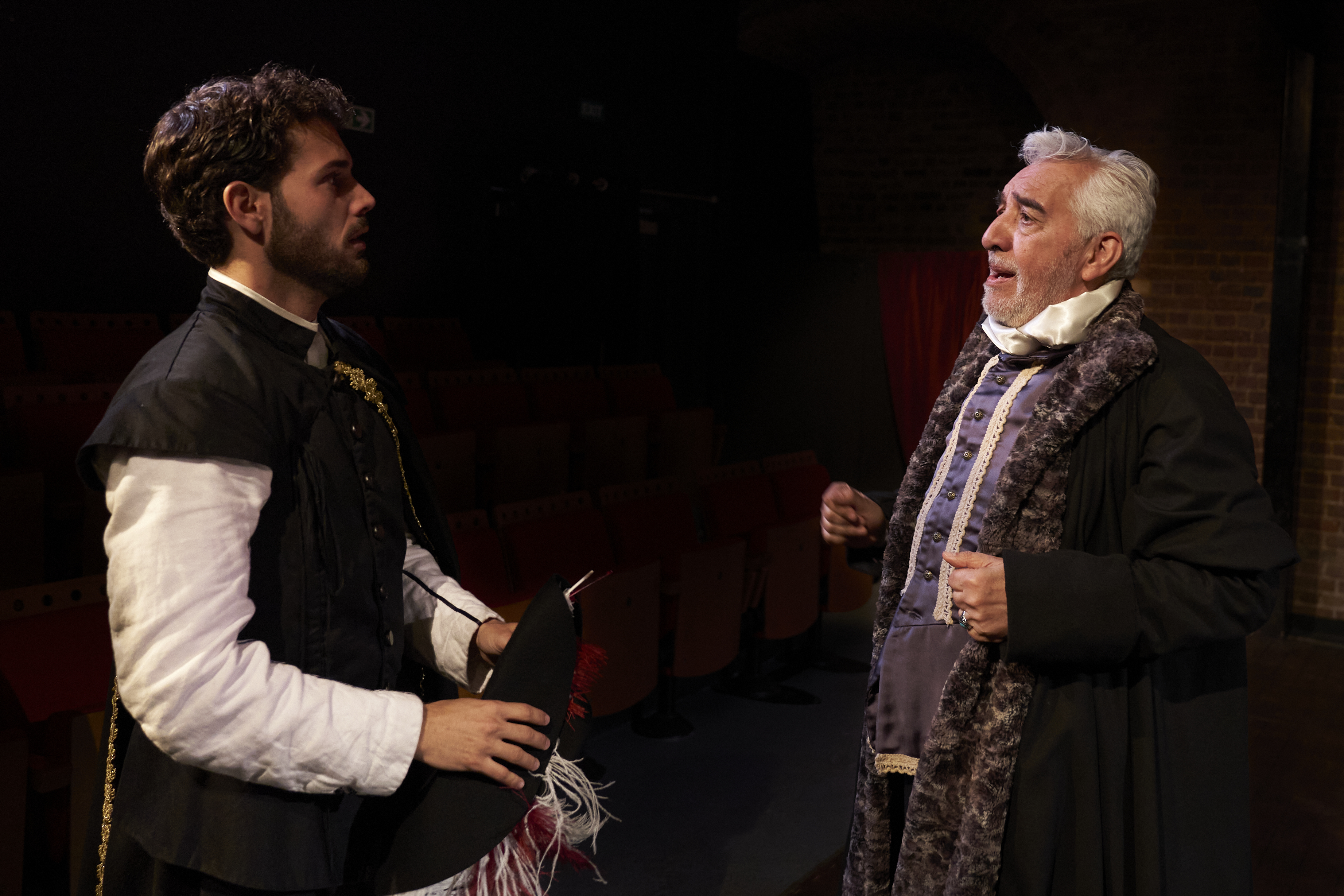
Gabriel de Mulder (Teodoro) and Mario Vedoya (Conde Ludovico).
This is a wonderful production, full of raw energy and vitality that feels true to how Lope de Vega intended it to be. It was a treat, that reminded me of the high quality of work that emerged during that singular Golden Age period in Spain, Great Britain and all over Europe that still remains so relevant today.
CAST: - Diana: Manuela Morales / Teodoro: Gabriel de Mulder / Marcela: Macarena Molina /Tristán:Rodrigo Arribas / Anarda / Celio / Lirano / Camilo:Sheila Niño / Conde Federico Ángel Ramón Jiménez / Marqués Ricardo: José Juan Sevilla /Fabio / Antonelo Martín Puñal / Dorotea / Leónido / Furio: Cayetana Oteyza / Conde Ludovico / Octavio Mario Vedoya
Director: Dominic Dromgoole / Adapted by Dominic Dromgoole / Fundación Siglo de Oro
Music: Xavier Díaz Latorre /Costume Design: Jonathan Fensom / Lighting: Fernando Martínez
Fundación Siglo de Oro / Photographer: Laura Racero and Corina J Poore


